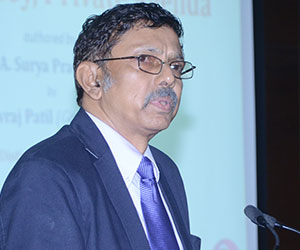The United Progressive Alliance government is readying itself to introduce a Bill to further strengthen the law against communal and targeted violence and to ensure speedy justice and reparations for the victims of communal violence. Though the objective is laudable – to boost the confidence of religious and linguistic minorities in all states and union territories – the first draft of the Bill, which has been prepared by the National Advisory Council (NAC), fails to inspire confidence. Far from promoting religious harmony and ensuring equity and equality among citizens of all denominations, the controversial Bill has many features which are repugnant to the basic structure of the Constitution and is loaded with features which will disturb communal harmony, wreck the federal features of the Constitution, weaken the states and turn the Union Government once again into a bully who can overawe the states with its ‘firmans’. It appears as if the Bill has been drafted by persons who are unschooled in Indian Constitutional Law and who are unaware of the big strides that the country has made to promote the federal spirit and to build a liberal and open society.
The aim of this Bill - called the Prevention of Communal and Targeted Violence (Access to Justice and Reparations) Bill – is ostensibly to curb communal violence and hatred but it rests on the flawed premise that in all situations the religious majority perpetrates violence on the religious minority. Therefore, members of the majority community in every state are seen as the culprits and members of the minority communities are deemed to be the victims. Such are its provisions that far from promoting communal harmony, it could weaken the commitment of the majority to secularism and promotion of a liberal environment all over the country.
Here are some of the worrisome provisions: The Bill describes ‘Communal and Targeted Violence’ in Section 3 ( c ) as “any act or series of acts …… knowingly directed against any person by virtue of his or her membership of any group which destroys the secular fabric of the nation”. The biggest mischief is in the definition of the word “group” that occurs in Section 3(e). It says a “group” means “a religious or linguistic minority, in any State in the Union of India, or Scheduled Castes and Scheduled Tribes within the meaning of clauses (24) and (25) of Article 366 of the Constitution of India”. This means that Hindus, who today constitute the majority in most states and union territories will not constitute a “group” under this law and therefore, will not be able to invoke its provisions, even if they are victims of Muslim or Christian communalism, hatred or violence. Similarly, the Sikhs in Punjab, the Muslims in Jammu and Kashmir and Lakshadweep and Christians in Nagaland, Mizoran and Meghalaya ( where these communities are in a majority) cannot seek relief under this law in these states.
The Bill describes a “victim” as a member of a religious minority who has suffered “physical, mental, psychological or monetary harm or harm to his or her property as a result of the commission of any offence under this Act, and includes his or her relatives, legal guardian and legal heirs, wherever appropriate”. Going by this description, a citizen belonging to a “minority” in any part of India, who is aggrieved with a neighbour who belongs to the “majority” over some issue, can turn around and accuse the neighbour of causing him or her “psychological harm”. Further, if the “victim” is not inclined to deploy this mischievous provision, the Bill allows his or her relatives to do so.
The Bill’s description of “hostile environment against a group” concludes with this omnibus provision: “any other act, whether or not it amounts to an offence under this Act, that has the purpose or effect of creating an intimidating, hostile or offensive environment”. By implication this means that a “minority” citizen can point a finger at a “majority” citizen at any time and complain that he or she feels “intimidated” or that the environment has become “hostile” to him or her
Further, when the Bill accords the “victim” the right to remain Anonymous; imagine the effect of these provisions. Citizens who happen to be members of the “majority” will be hauled up by the police for offences allegedly committed by them, but the accused persons will not know who the complainants are! Section 82 even provides for attachment of property of members of the majority community pending trial . It says: Where the charge has been framed in relation to an offence under this Act, the Designated Judge may direct that the property of the accused person be attached during the pendency of the trial and until conviction or acquittal, as the case may be.
The Demographic Reality
The Hindus constitute a majority in 28 of the 35 states and union territories in the country and will have to bear the brunt of this Bill’s mischievous provisions. But that does not mean that citizens belonging to other denominations are free of bother. Muslims, Christians and Sikhs could also find themselves in trouble because under our Constitution, the state is the unit to determine the issue of majority-minority. As per the religion data in the 2001 census, the Sikhs constitute 59.9 per cent of the population in Punjab, whereas the Hindu population in that state is 36.9 per cent. If this law comes into force, the Sikhs (constituting the majority) will be in a quandary if the “minority” Hindus start using this law to accuse the majority of promoting communal hatred and anti-secular policies. Similarly, Christians, who have an overwhelming majority in three states – Nagaland ( 90 per cent ), Mizoram ( 87 per cent) and Meghalaya ( 70.30 per cent ) – will find themselves in deep trouble if the Hindu minority in these states begins to leverage this law and lodge complaints against the religious majority. For similar reasons, the Muslims in Jammu and Kashmir and in Lakshadweep are not going to be very happy with a law of this kind. Therefore, citizens who happen to be Muslims, Christians or Sikhs should not be taken in by the sweeping claim made by the promoters of this Bill because this law does not treat all perpetrators of communal violence and hatred equally.
There is yet another anomaly in regard to determining the majority and the minority in some states because of the demographic reality in many states and union territories. For example, there are states like Manipur (46 per cent Hindu) and Arunachal Pradesh (34.60 per cent Hindu) where no religious group has a clear majority. So, who is the “culprit” and who is the “victim” in these states? Further, if you exclude the Scheduled Castes and Scheduled Tribes from the Hindu population, what will be the percentage of Hindus in these states. Kerala, with 56.20 per cent, is also a case in point. If you exclude Scheduled Castes and Scheduled Tribes (22 per cent approx), what is the percentage of the Hindu “majority” in that state? Also, can this “majority” be seen as the oppressor of the Muslim “minority” (24.70 per cent) or the Christian “minority” (19 per cent).
Apart from generating communal strife and pitting religious minorities against the majority in every state and union territory, the Bill incorporates some extremely dangerous provisions which seek to re-impose the “dadagiri” of the Centre on the states and even promote insubordination in the administration in the states. There is also an attempt to introduce some mischievous provisions to classify crimes on communal lines.
As stated earlier, this Bill ab initio treats members of a religious minority as “victims” and members of a religious majority as “culprits” in every instance of communal violence. The other insidious aspect of the proposed law is the attempt to use communal violence as a pretext to usurp the states’ rights to maintain law and order and to signal to bureaucrats and policemen in states that the big brother in Delhi is watching you. It is obviously a cunning attempt to re-acquire the unbridled powers which the Centre had exercised under Article 356 of the Constitution before the Supreme Court’s verdict in the Bommai Case.
The Bommai Judgement and After
Prior to the Bommai Case, the Union Government imposed Article 356 with reckless abandon. The Congress Party, which was ill at ease with the growth of regional parties, used this provision regularly to sack duly elected governments and to impose President’s Rule in the states. For example from 1950, when the Constitution came into being, to 1994, when the Supreme Court pronounced its judgement in the Bommai Case, Article 356 was used by the Centre on 102 occasions. On most of these occasions (77) the Congress Party was in power at the Centre and just one Prime Minister – Indira Gandhi – used this provision 50 times. The Supreme Court stopped such misuse of Article 356 via the Bommai Case. The court declared that henceforth the proclamation issued under Article 356 would be judicially reviewable and the court would examine whether the proclamation was issued for malafide reasons. It said the court would retain the power to reverse the actions taken by the President if they were found to be malafide. This judgement virtually put an end to misuse of Article 356. The Communal Violence Bill now offers scope for mischief via a backdoor entry of Article 356 as it stood prior to the Bommai Case in the guise of ensuring minority rights.
Initially the proponents of the Bill wanted organised communal violence in a state to be classified as “internal disturbance”. Article 355 imposes a duty on the Union Government “to protect every state against external aggression and internal disturbance”. Therefore, this was a clever move to snatch away the basic constitutional right of every state to manage Law and Order and to impose central rule. However, following public protests, the NAC has recently announced that this provision has been deleted from the Draft Bill.
However, the threat to the independence of state governments is not over because of certain other provisions in the Bill like Sections 9, 13, 14 and 16 pertaining to the bureaucracy and the police in the states and Section 15, which directly targets office-bearers of political parties. Section 13 pertains to dereliction of duty and is so worded that every public servant working in the district or state administration ( with some responsibility in regard to maintenance of law and order) can be hauled up in the event of a communal flare-up. Officials can also be accused of helping or harbouring culprits belonging to the majority community. Section 14 deals with public servants for breach of command responsibility meaning their failure to control the men in their command. In other words, police officers can be prosecuted if men under their control commit an offence or are accused of committing an offence against a religious minority. The law proceeds on the assumption that the officer ought to have known that persons under his command would commit an offence.
Encouraging Insubordination in the States
But the worst provision is Section 16, which is directly aimed at promoting insubordination in the Police and para military forces deployed in a troubled state. It says “Where an offence has been committed under this Act, the fact that it was committed by a person pursuant to an order of a superior shall not relieve that person of criminal responsibility…………”. In other words, it encourages every policeman to question or challenge his superior right up the line of command and to, if he so believes, disobey his superior. Every policeman will need to worry about how the Union Government (and not the state government) will view his actions. It is difficult to find a more irresponsible provision in any law.
The law proposes for the establishment of a National Authority for Communal Harmony, Justice and Reparation and similar authorities in the states. It empowers the national authority to enter any building and seize any documents, which means it has the authority to intrude into state government offices and even the chambers of chief ministers. Several other provisions also hit at the root of federalism and weaken the states.
Equally disgusting is the communal colour that this Bill gives to every major offence. Though the Indian Penal Code deals with all such crimes, this law draws a distinction between rape of a “minority” woman and a “majority” woman and assault of a “minority” person and a “majority” person. The victim acquires an exalted status if he or she belongs to a “minority”. Nowhere in the democratic world does one get to see such communalization of crimes.
Finally, politicians belonging to political parties which are not part of the political dispensation at the Centre had better watch out. Section 15, which talks of offences committed by “other superiors” says “Whoever, being any non-state actor or superior or office-bearer of any association……….” The implication of this is that office-bearers of political parties and associations and organisations affiliated to political parties which are ruling a state can be hauled up under this law. This is obviously a provision to enable the Centre to haul up political opponents and their affiliates in the states.
The net result is that this Bill will destroy communal harmony, weaken the federal structure and encourage authoritarian trends at the Centre. It must be rejected lock, stock and barrel.
--------------------------------------------
Published Date: 12th August, 2011










Post new comment